
The Australian Bureau of Statistics (ABS) has just released housing finance data for the month of April, which registered a seasonally-adjusted 0.8% increase in the number of owner-occupied finance commitments over the month. It was the third consecutive increase in owner-occupied commitments but missed analyst’s expectations of a 2% rise.
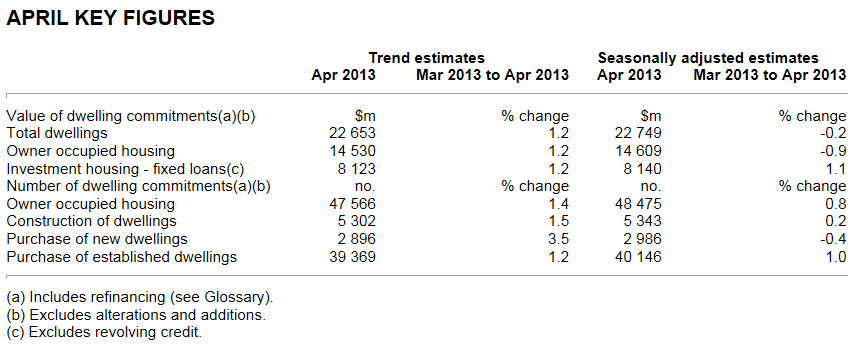
The number of owner-occupied housing finance commitments (excluding refinancings) registered a seasonally-adjusted 0.7% decrease over the month of April to be tracking 1% above the five-year moving average level. The series is also up 11.4% on April 2012.
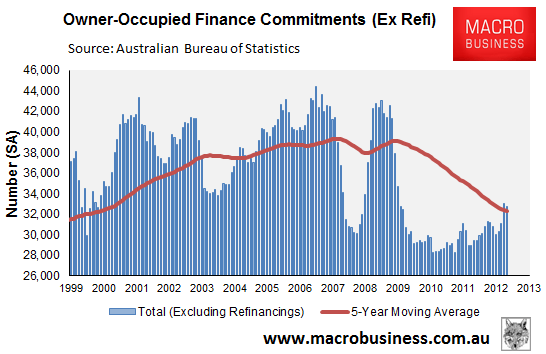
The average loan size was essentially flat over the month, but has risen by 2.6% over the year, roughly in line with RP Data’s dwelling values index. The below charts show the series on a 3-month moving average basis (in order to smooth volatility). Note the slide in average loan size over the most recent quarter, which again is reflected by recent weakness in the RP Data dwelling values index.
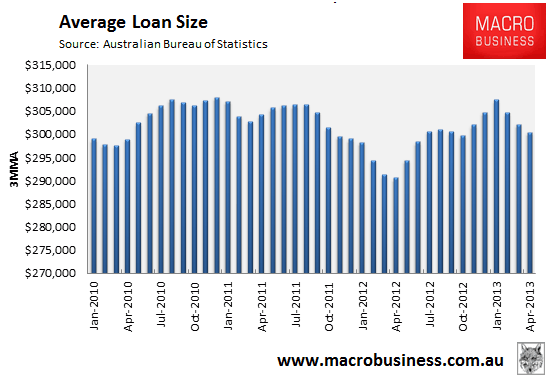
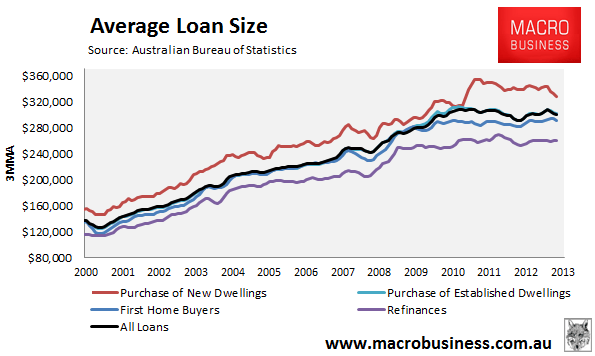
First home buyer (FHB) commitments continued to recover, recording a 5% non-seasonally adjusted gain in April, but represented just 14.3% of total owner-occupied commitments. They were also 28% lower than April 2012 (see below charts).
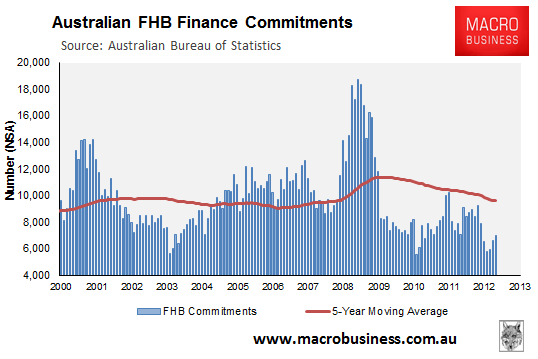
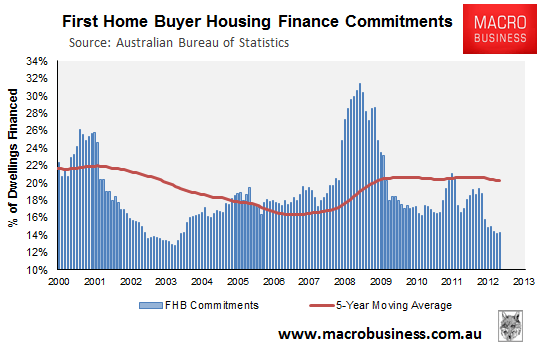
The ABS only provides the value of investor finance commitments. These were up by 1% in April, by 18% over the year, and were at the highest level since January 2008, suggesting that investors continue to drive much of the growth in housing demand and prices (see next chart).
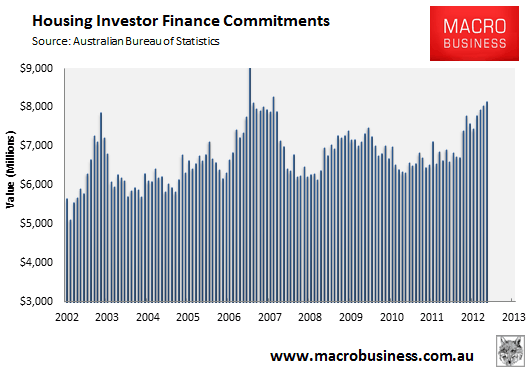
This release illustrates the contradictions on display in the housing market. While the overall number of finance commitments has been rising, average loans sizes are falling, suggesting that more homes are transacting at lower prices. Moreover, first home buyers (FHBs) remain largely absent from the market, replaced by strong demand from investors. FHB demand is likely to weaken further once recently announced changes to FHB Grants favouring new construction over pre-existing dwellings take effect in Victoria, Tasmania and the ACT.

